The Palomar Knot is easy to tie and retains maximum strength of your fishing line. This guide shows you how to tie it (plus other important details).
More...
There's a lot of clutter out there on the Internet, and all you want to do is learn how to tie a Palomar knot, so let's go ahead and get down to brass tacks.
Afterward we'll cover the finer details of tying this knot, when to use it and more about catching fish in Louisiana.
Palomar Knot Tying Instructions
These instructions work for any kind of fishing line, whether it is braid, monofilament or fluorocarbon.
Step One
Thread your line through eye of the swivel (hook, lure or whatever) then back through, forming a bight. With braided line you can simply bend the line in half and pass that through instead.
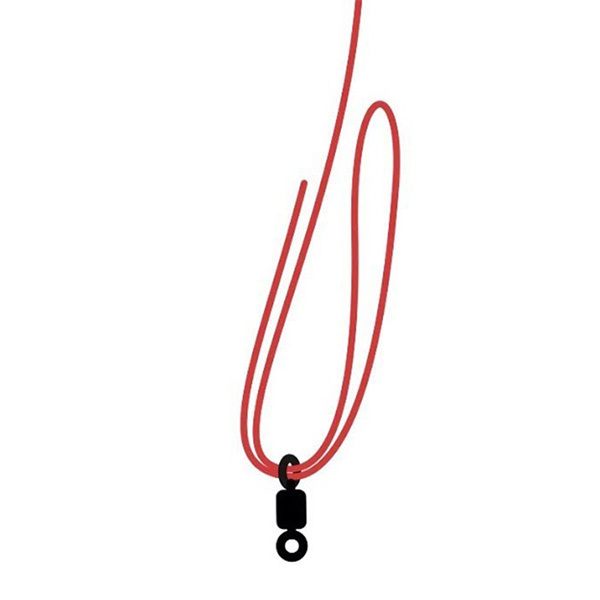
Be sure to leave plenty of slack to finish the rest of the knot. Six to eight inches is great.
Step Two To Tying The Palomar Knot
Tie an overhand knot with the doubled line, being sure to leave it loose. Do not tighten the Palomar knot yet!
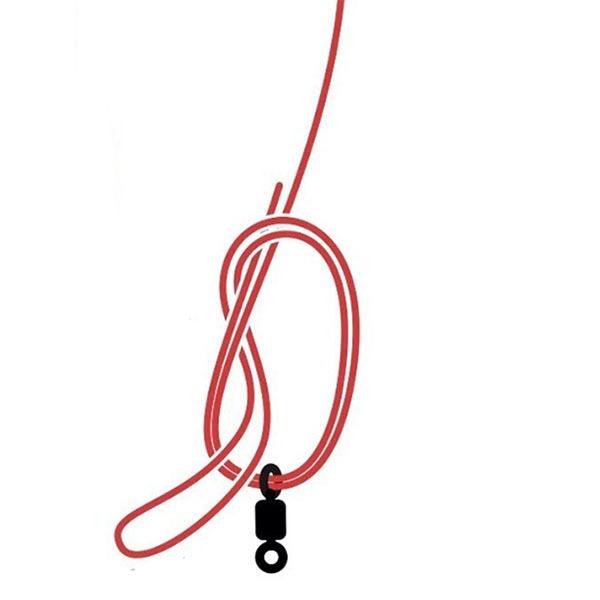
Step Three
Take the loop you made with the overhand knot and pass it over the swivel.
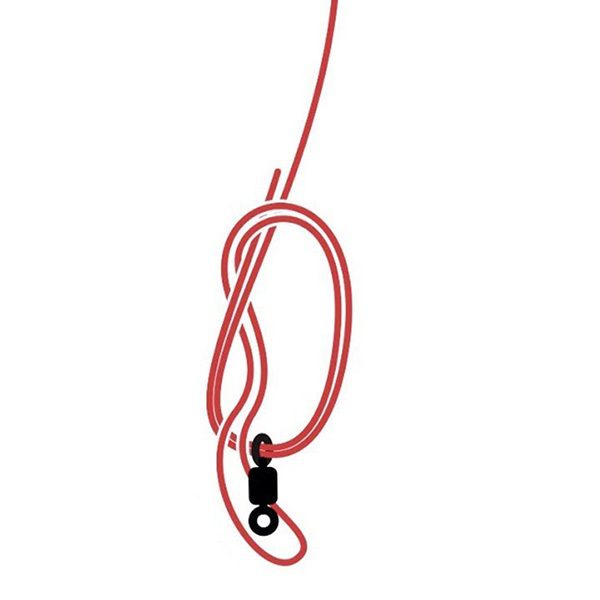
Step Four
Moisten the line and tighten the Palomar knot down by pulling on the tag end and main line, being sure that the knot tightens on the eye and not the body of the swivel so it can spin freely.
If you are tying onto a hook, then ensure that the Palomar knot tightens on the hook's eye and not the shank.
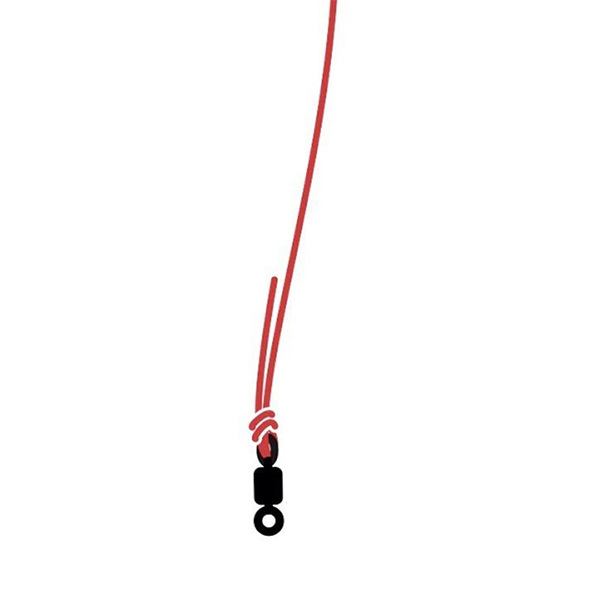
Step Five
Trim away any excess line on the tag end, leaving about 1/8 of an inch.
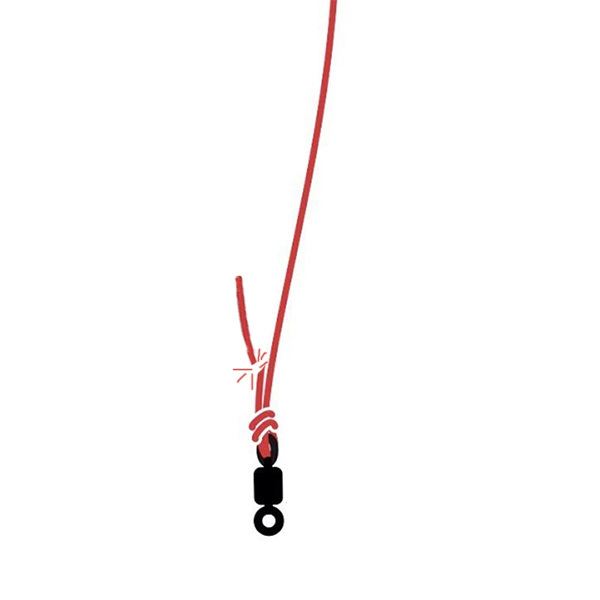
Congratulations!
You've just successfully tied a Palomar Knot, but we're not finished yet!
Keep reading to learn those small – yet important – details learned from years of fishing with this knot.
Extra Tips For Tying The Palomar Knot
These are the finer details you want to pay attention to as well as some interesting facts.
What lures and tackle is this knot good for?
It is best used for terminal tackle like hooks and jigheads.
It is better to use an Improved Clinch Knot for larger lures such as spinnerbaits and topwater lures because it is clumsy passing such a large lure through the loop of a Palomar knot.
Line Cannot Be Crossed When Tying
When tying your palomar knot you will want to pay attention to how it dresses down as it is tightened, or how the line falls into place.
You don't want it crossed over itself!
If so, it can cut itself and break the knot.
To get the most out of a palomar knot you need to be sure that it is not crossed over itself.
How much of the fishing line's strength does a Palomar knot retain?
This knot does an excellent job of retaining nearly 100% of the fishing line's strength.
This has been tested for braided, monofilament and fluorocarbon fishing line and the International Game Fish Association rates the Palomar knot as the strongest knot you can use.
Furthermore, Bob Rackley (the man who was once in charge of fishing line research for the inventor of monofilament fishing line, Dupont) insisted that the Palomar knot be the only knot any angler use for any hook or lure.
Always Moisten Before Tightening Down
Lubrication is key when tying a Palomar knot, so dip it in water or use your mouth to moisten the knot.
This way it won't abrade itself as it is tightened, keeping the fishing line's strength instead of weakening it.
Who invented the Palomar knot?
This knot was invented by Chet Palomar, a Scoutmaster of the Boy Scouts of America.
How is Palomar pronounced?
It is pronounced PAHL-oh-mahr, or watch the video above.
Practice Makes Perfect
As always, the only way you will become proficient at tying the Palomar Knot is to constantly practice doing so.
Your time on water is precious, and you don't want to spend that time trying to remember what you saw here, so make a point of practicing at home before you go on your next fishing trip.
There's more to catching specks and reds than tying knots...
I'm not exactly what you'd call a "knot nerd" because I feel that it doesn't matter if a Palomar (or whatever knot) breaks at 95% or 75% of the line's strength.
What matters is finding fish. A lot of fish.
So many that the water is boiling in a feeding frenzy and you're catching keepers on every cast.
Doing exactly that is the focus of this website.
That's why you really need to sign up for my newsletter so you can get good fishing tips and advice for catching specks and reds.
I'll show you a lot more than tying a Palomar Knot, like how I find biting fish from scratch, how to safely navigate the marsh and use various techniques to catch them.
Tell Us What's On Your Mind
While this guide has a lot of detail, it cannot possibly have everything.
That's why I am asking you to speak up in the comments section below if you have a question, comment or something to add.
Tight lines!

Thanks, Jeff. I’ll be sure to include this.
How to tie Paloma knot when you can’t get the loop through the eye of hook
Thanks for commenting, George!
Make sure you have all the string together, loop can get on shaft of hook or the swivels. I test it by placing hook to object and pull like a big red. Thanks Devin
Good point, thanks for commenting, Gary.
You’re welcome, Johnathan. Thank you for commenting!
I love that. That’s a practical tip that works for being out on the boat.
Hey Capt, good feedback. I’ll tell you what I think.
Look, I’ll admit that I am not a knot nerd, and this is coming from a guy who tied knots professionally for rappelling down buildings, SPIE-rigging out of helicopters, lashing down Zodiacs, etc.
Knot failure there is simply not allowed, not unless you like death and dismemberment. lol
Then there’s the ornamental stuff, like Turk’s Head knots, Monkey Fists, etc. and that’s fun, too. I’ve tied hundreds in the last seventeen years that are still tight and in place today.
My point is that I’ve got a background in knot tying that goes beyond tying a few for fishing, and I did not bring that same kind of dedication and passion to tying fishing knots.
That’s because I like catching fish more than I like tying knots, and feel (very strongly) that knots have little to do with catching fish and don’t deserve the same scrutiny as a knot used to attach yourself to a helicopter.
What matters is finding biting fish and providing that kind of know-how is what’s going to get people on awesome fishing trips and, once they do, they’ll remember where they got it from.
So, while people beat a dead horse over whatever knot’s strength, or how well it passes through the guides, etc. I’ll be putting 100 speckled trout in the boat.
I just don’t think the breaking strength of an Improved Clinch versus that of a Palomar is a deal breaker on a fishing trip (not that you said that, but that is a common theme in knot discussion).
Sometimes I suspect content creators on the Internet focus on things like knot tying because they’re not as good as they could be at catching fish.
Anyway, that’s why I’ve never really covered the whole knot thing: because it’s beat to death and finding/catching fish is the content that matters (and not made as well as it could be by most content creators, if at all).
BUT, with alllll that said, I will definitely create more knot videos if enough people ask for them because if that’s what they want, then that’s what they get. It’s as simple as that! LOL
Thanks for commenting.
Thank you, George!
Thank you, Stan!
Thanks Bill, that’s a good point.
Agreed. Good point.
Thanks for commenting, Chris!
It cinches down the same, just make sure the line isn’t crossing itself.
You know, one of the fun things of this job is researching what I presume I already know to find those extra factoids. You just want to make the best content possible. Anyway, crossed lines in anything will be a problem, or at least I guess it’s safe to assume that. I know I learned that in the Marines tying knots. But I did come across some other content specifically stating that as being a problem, because some people were getting a lot of popped knots when tying the Palomar.
Anyway, thank you for commenting!
Thanks, Colin. You make me feel like this guide knocks it out the park. LOL
Absolutely. Thanks for commenting, Chuck!
Palomar knots are great, but as mentioned above, I like a non-slip loop knot because it gives jigs and other lures more action.
Uhm, I’m not entirely certain what this has to do with Palomar knots, but to answer your question: “no, not really”.
I’m sure I could, but I’d rather target speckled trout and, if I’m going to focus on redfish, then I’d rather sight fish them.
Trust me, it’s way more fun!
Here’s more information for you, Andrew: https://www.lafishblog.com/finding-the-pumpkin-patch/
Thank you!
Excellent job on this tutorial for the Palomar Knot. I use this know exclusively with braided line and have never had an issue with the knot.
Great job! Step 2 picture one of the better ones I’ve seen. Extra tips are great. I wasn’t aware of the issue with crossed lines, certainly pay attention in the future. As a father of two Eagle Scouts, I wasn’t aware of the knots origins. Thanks!
Hey Devin, just curious if you ever fish the nearshore rigs for bull reds in the springtime?
Capt Devin I admire your dedication to teaching it right and respect your time on the water experience. Sometimes it’s difficult to present things that are common knowledge, nuff said.
I was reviewing ‘Step 3’ of your presentation and questioned if it mattered which direction the loop was to be passed over the swivel, because I’ve always passed it the opposite way, and can’t remember ever having a problem with it.
Referred the illustrations used in ‘Steps 4 & 5’, found they are not a good representation of the finished knot. I was having trouble seeing the smaller knots I was tying, trying to compare, so I used 200lb mono, tied this knot to a chain link both ways, the finished knot appeared to be the same.
Your thoughts?
Use the Palomar knot 90% of the time, even on baits that are clumsy because of length. Simple and dependable. Good tutorial. Top water and MR 17 I use a loop knot. Especially if I’m tying on in the garage. But out on the water, Palomar.
Chris
Eastern NC
I use this knot a lot but when using braid I make two passes through the eye. I find it helps keep the line from wearing/fraying on metal of the eye.
You might want to mention that the Palomar is essential for employing the drop shot technique. I find drop shoting to be very effective when you want to fish the bottom as it minimizes the number of times you have to retie. You only loose the weights, not the hook and you simply slip another weight on the tag line. Far less frustration.
I like the examples you use when explaining how to tie the knot. Some examples during the extra tips would be great especially of what not to do.
I sent an email directly to you. The comment section was up and running after I went back. Great video. And perfect on when to use. Great job
I disagree with Bob Rackley that the Palomar knot is good for all lures. I have found a “loop knot “ allows medium to small top water lures to have better action. A lure like a Yellow Magic will not work at all with a palomar knot.
If tying a leader below a popping cork to a jighead make sure to tie the leader to the cork first before tying to the jighead. Otherwise it will be more awkward to slip the loop over a 2-3 ft leader with a jighead on it.
I find it much easier to place my finger through the loop at the hook eye to hold it open as the knot tightens down. I get a much smoother knot when doing that.
I just bought LAFB ELITE finished it last night and will be going over again and again. A lot of great information that I have to soak in. Love it. As far as the Palomar knot goes its great, I been tying the improved clinch knot since I was a little kid. Like you said the palomar knot needs to be practiced at home.
Looks good Devin! They also have a double Palomar knot that you may want to do a video on. How about showing an FG knot vs Uni to Uni when connecting line to leader?
Very well done, my only comment is I cinch the loop lightly on my finger so the wind doesn’t make a mess of it.
I once asked a factory rep advertising his line as the best out there, what was the weak point in his line. Without hesitation he answered the knot. Asking which knot he would use, he answered the palomar knot. That was 30 years ago and I have used that line and that knot ever since. Good enough for the factory, good enough for me. Thanks Devin
Great article. Can’t wait to see more comments.
I double up braid so it doesn’t slip out of the hook eye. Or you can get pliers and smash the hook eye against the shank so there’s no space for braid to slip through. This should be done with any knot, not just the Palomar Knot.
You may have already mentioned it, but wetting the knot before cinching it down reduces friction that could potentially weaken the fishing line.
Enjoy your blog posts, thanks for including us!
You really though this out, but if you want to split hairs then know you ought to use sharp scissors to cut that tag end. When you bite the tag end off like with monofilament or fluorocarbon you flatten it out and it can get fine grass like snot grass hung up on it, ruining the cast. Fish don’t like salad, they want meat!